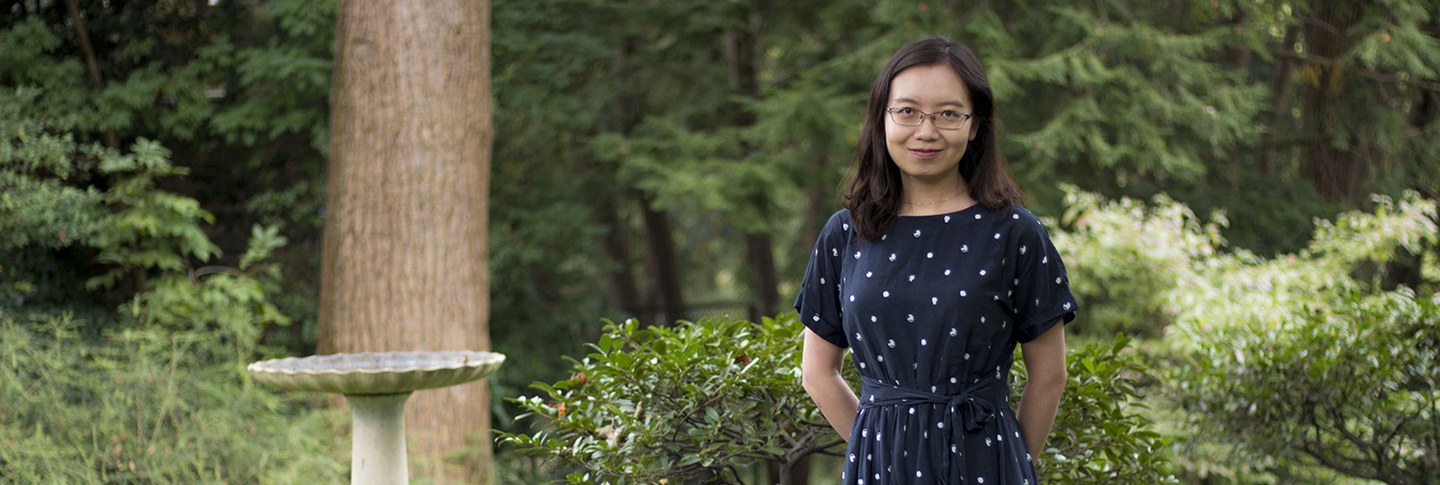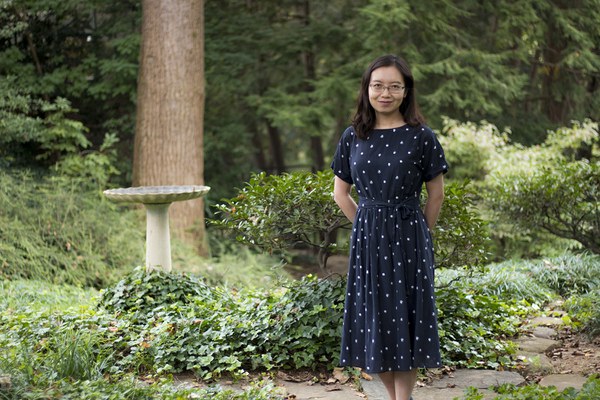Xi Li, an associate professor in the School of Architecture and Landscape at Peking University, was an Association of Research Institutes in Art History (ARIAH) fellow from July to October 2018. Her recent informal talk, “The Oath between Wood and Stone: The Significant Things in Bai Juyi’s Studio of the Lu Mountain,” demonstrated how Chinese scholar-officials sought freedom through uselessness in their painting, poetry, and gardens.
Q&A with Xi Li
Give a bit of context about Bai Juyi, his “things,” and his relevance to the Chinese literati.
Bai Juyi was an official in the government. During a political conflict, he was demoted to a humble position in the remote area beside the Lu Mountain. In the mid-Tang dynasty period and later, the fluidity of social status increased, as a result of the imperial examination system and the decline of the aristocracy. It became easier to be promoted or downgraded because success or failure in political conflicts.
Depressed about his demotion, Bai Juyi built up the Lu Mountain as a space to distance himself from his social identity as an official. Interestingly, based on his writings, his life there seems a happy one. Bai Juyi described it as a “suitable” and enjoyable place for him because he was close to the natural environment and learned to treat ordinary objects as partners, rather than as furniture or tools. He broke down the relationship of “the owner and the owned.” The relationship between Bai Juyi and the chair or the plain screen is not that of owner and owned object; they are equals in inhabiting the studio.
The importance of Bai Juyi is that he set up a way of thinking for Chinese literati art. Shortly after Bai Juyi’s period, people started to paint his figure to express their ideal life and build gardens in praise of his life, which became an “individual world” distinct from social reality or civic life. In other words, we can conceive of the Chinese garden as a pleasant arcadian place that smoothed the tension of the literati’s minds and offered an escape from real life.
These things Bai Juyi called “useless” were “still the things that others use,” commented Gudrun Bühl (curator and museum director, as well as the ARIAH delegate from Dumbarton Oaks) during the Q&A portion of your talk. How would Bai Juyi have responded to this conundrum?
Bai Juyi did say that these kinds of things are useless, and yet emphasized them being “useful” for him in some ways. We can think of what [recent Mellon Senior Practitioner Resident] Toru Mitani called “useless use.” Unlike the wasteland or destroyed tools, this kind of useless use is not something intentionally made as a useful object and abandoned after losing its use, but something that can bear an everlasting use, or being alive in the world. It is a unique relationship between a human being and an object.
Actually, the reason I’m here at Dumbarton Oaks is to study ideas of ruins in the landscape of 18th-century Britain. Ruined architecture is a form of used and then useless architecture. The appreciation and depiction of ruins were deeply associated with the Enlightenment idea of “Nature.” But ruins are manmade, they’re a part of civilization and the history of architecture. Chinese literati wrote a lot, in poems and prose, on ruins in landscape, but they rarely built ruins in their gardens or depicted them in paintings, though some Western travelers interpret the rocks as a form of ruins, through the lens of the picturesque. Chinese literati tend to bring a dreamy and permanent world into presence, where things would not be used as tools and thus never turn into ruins in the end.
How do the philosophies of Laozi and Heidegger shape your understanding of Chinese art history?
Just like Western art, Chinese art history is not a field that can be interpreted by a single theory. However, what turned out to be very influential was literati art, composed of the literati’s poems, paintings, and gardens. The three are to some extent derived from the idea of Daoism. Like Bai Juyi’s plain screen and grotesque-wood chair, literati art was made not to show off noble status by its remarkable form and function but to illuminate the thing itself in the most common use.
Daoist philosophy has been compared with phenomenology (especially Heidegger’s) by both Western and Chinese scholars. It’s very hard to point out all the similarities between Heidegger and Daoist philosophy in few words. But Heidegger did read and quote Laozi and thought about the idea “ready to hand,” which distinguishes the concept “thing” from “object” in his later works. He insightfully integrated the concepts of art and architecture into the meaning of “things.” It is, in an odic way, expressed in Bai Juyi’s words, which were influenced by Daoist ideas. Those things are not intentionally made to endure in the useful world, but actually endure in the “true world.”

